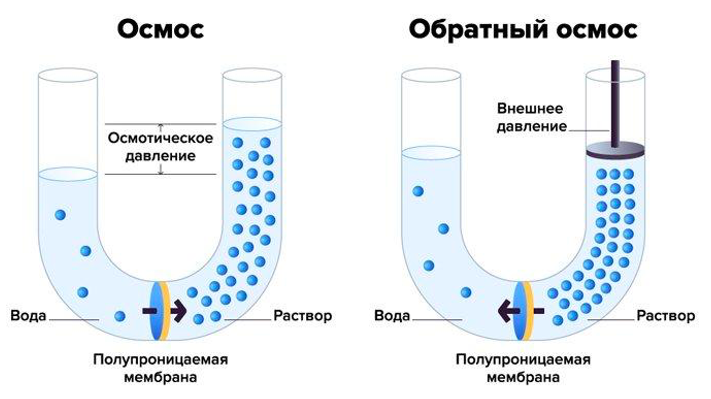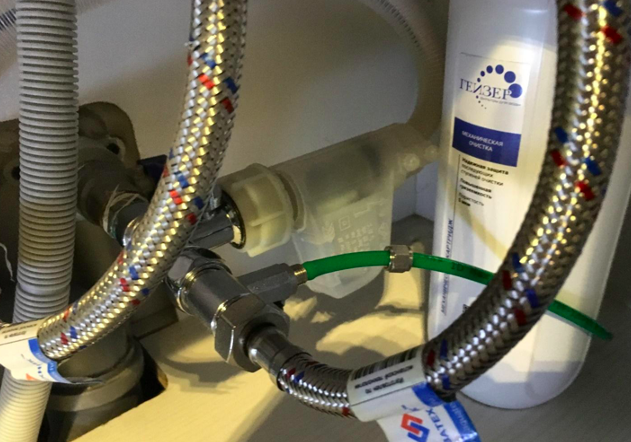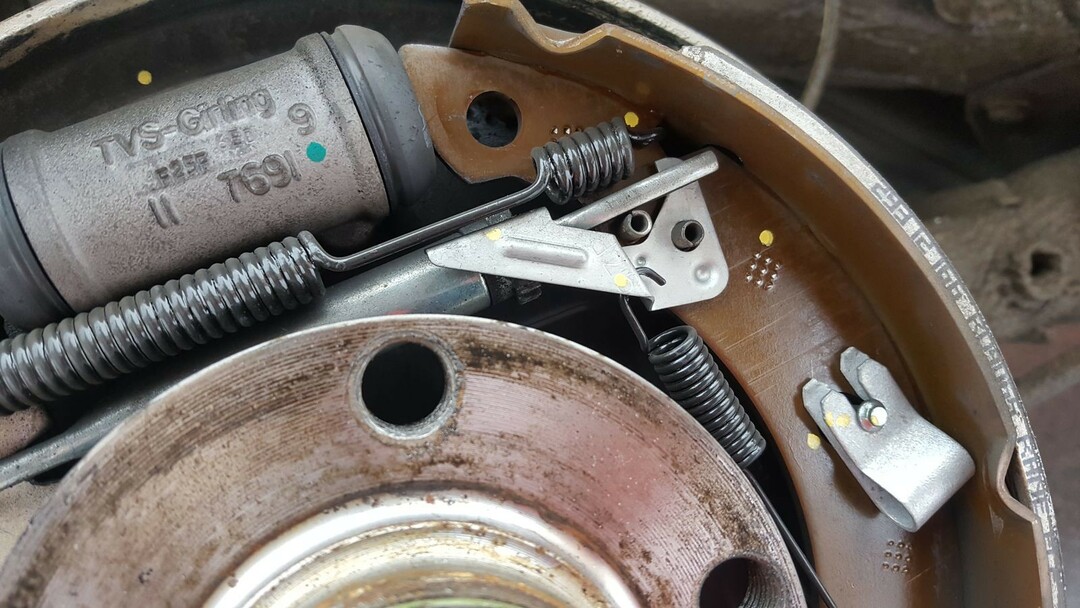Explaining how reverse osmosis works is quite simple. This is an installation with a membrane of a special structure. It allows water to pass through and retains particles. The process is called reverse because the flow of water is under pressure. This greatly increases productivity. How such filters are arranged, and how to choose them correctly, is described in detail below.
The content of the article
- Principle of operation
- Pros and cons of reverse osmosis
- How to choose a filter
Principle of operation
The principle of operation of reverse osmosis is based on a known physical phenomenon. If you pour a solution into a container and put a semi-permeable membrane through which only water can penetrate, then you can quickly filter the liquid from impurities, as shown in the diagram.

This process is spontaneous and does not require an additional source of energy. If we take a reverse osmosis water filter as a basis, for this it is necessary to install a pump that will create external pressure. Under its influence, the solution will pass through a special type of membrane. Moreover, water freely passes through it, while impurities will be retained on the surface.
The osmosis system for water purification is used in various filters - industrial and domestic. They consist of several elements:
- Frame.
- semi-permeable membrane.
- Shut-off valve (works automatically).
- Primary filter.
- Cleaning element (contains granular adsorbent).
- Charcoal cartridge (block).
- Storage tank.
- Post-filter (based on carbon).
It is clear that this is reverse osmosis, and how it works. The process is based on the fact that water with impurities is forcibly injected and passes through a semi-permeable membrane. Thanks to this, the purified liquid goes further - it can be used, and contaminants are retained on the filter surface. In most cases, such devices operate with a capacity of 3-15 l / h.

Pros and cons of reverse osmosis
Considering how a reverse osmosis water filter works, there are several advantages and disadvantages to this technology. If we talk about the pros, we can identify the following points:
- effective cleaning of salt and heavy metals;
- removal of harmful organic impurities;
- neutralization of bacteria and viruses;
- water has a pleasant taste, without foreign odors;
- cleaning goes without big expenses;
- no chemicals are used;
- filtration is effective due to a multi-stage process.
Although there are some downsides. The reverse osmosis method is characterized by the following disadvantages:
- filters work well only at a minimum pressure of 3 atmospheres - otherwise, cleaning will not work;
- a semi-permeable membrane cannot trap a gaseous impurity;
- the principle of reverse osmosis allows you to effectively filter water, but it does this much more slowly compared to a mechanical or sorption system;
- such systems are quite expensive, their installation is carried out only by experienced specialists.
It should also be understood that such a filter removes both harmful substances and a significant part of useful compounds from the water. Therefore, it is optimal to install a system with a mineralizer. Passing through it, the liquid will be enriched with mineral components that are needed for the body.

How to choose a filter
To select a suitable model, it is not enough to know the principle of operation of a reverse osmosis filter. Experienced users recommend focusing on several parameters:
- Dimensions - the body and tank should be compact enough to fit easily under the sink. And they should not just get in there. It is also important to leave free access to all the elements, which is useful in case of repair or dismantling.
- Performance - for ordinary household models, it is 2-4 liters per hour, which is quite enough to get drinking water. But if more purified liquid is required, it is better to consider more powerful devices with an indicator of 10-15 l / h.
- Water consumption - the smaller the characteristic, the better. Well, if it does not exceed the ratio of 10: 1 (this is the ratio of source water to purified water).
- The service life directly depends on the durability of the parts and the quality of the assembly. As a rule, modern filters are designed to process 5000-10000 liters of water.
- Ease of maintenance - it is better to consider such devices, the cartridges of which can be replaced without the use of special keys.
Reverse osmosis filters are expensive installations with low productivity. They usually purify only a few liters of water per hour. However, thanks to the multi-stage cleaning, the result always remains of high quality. This liquid can be used for both drinking and cooking.


